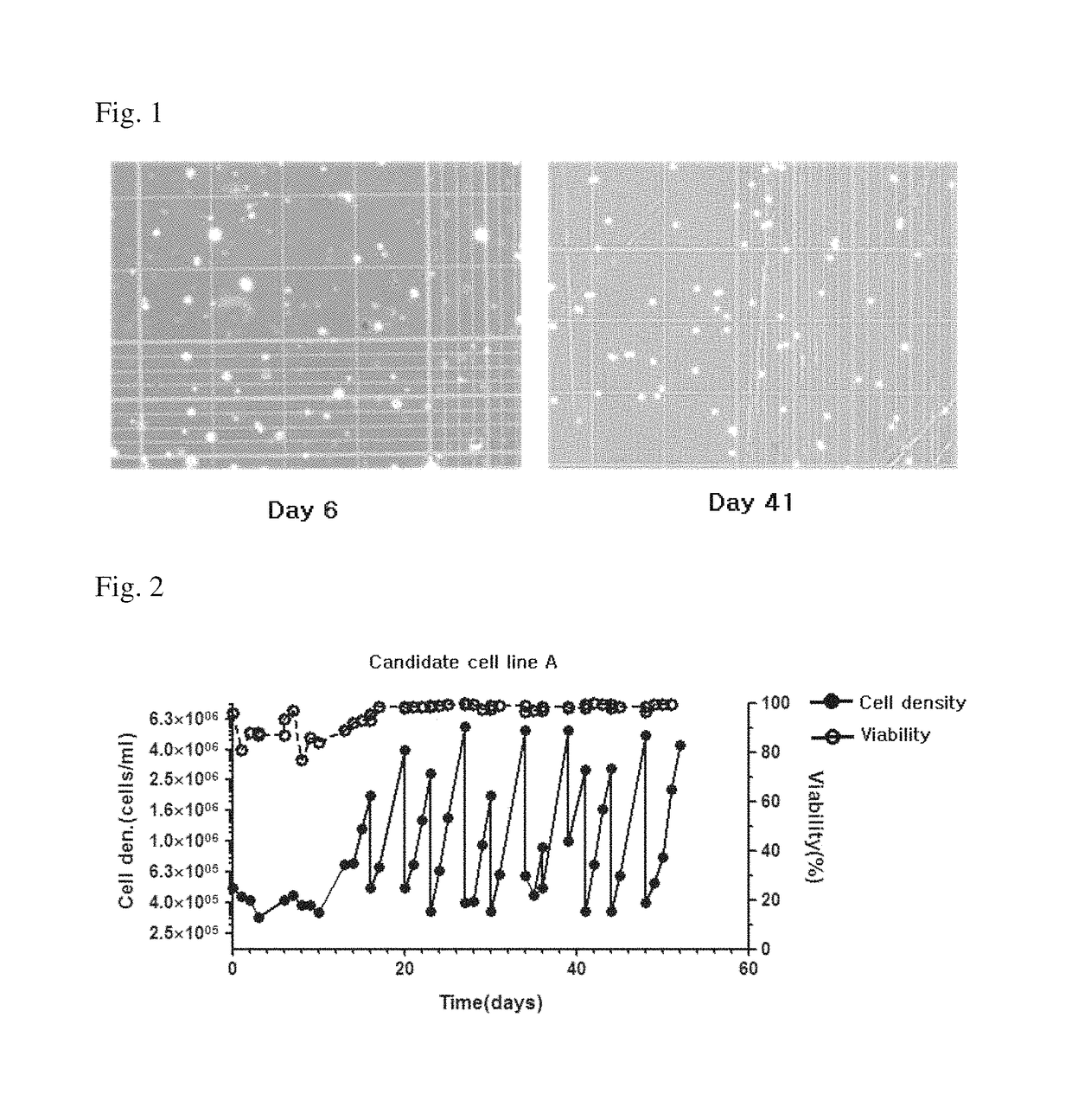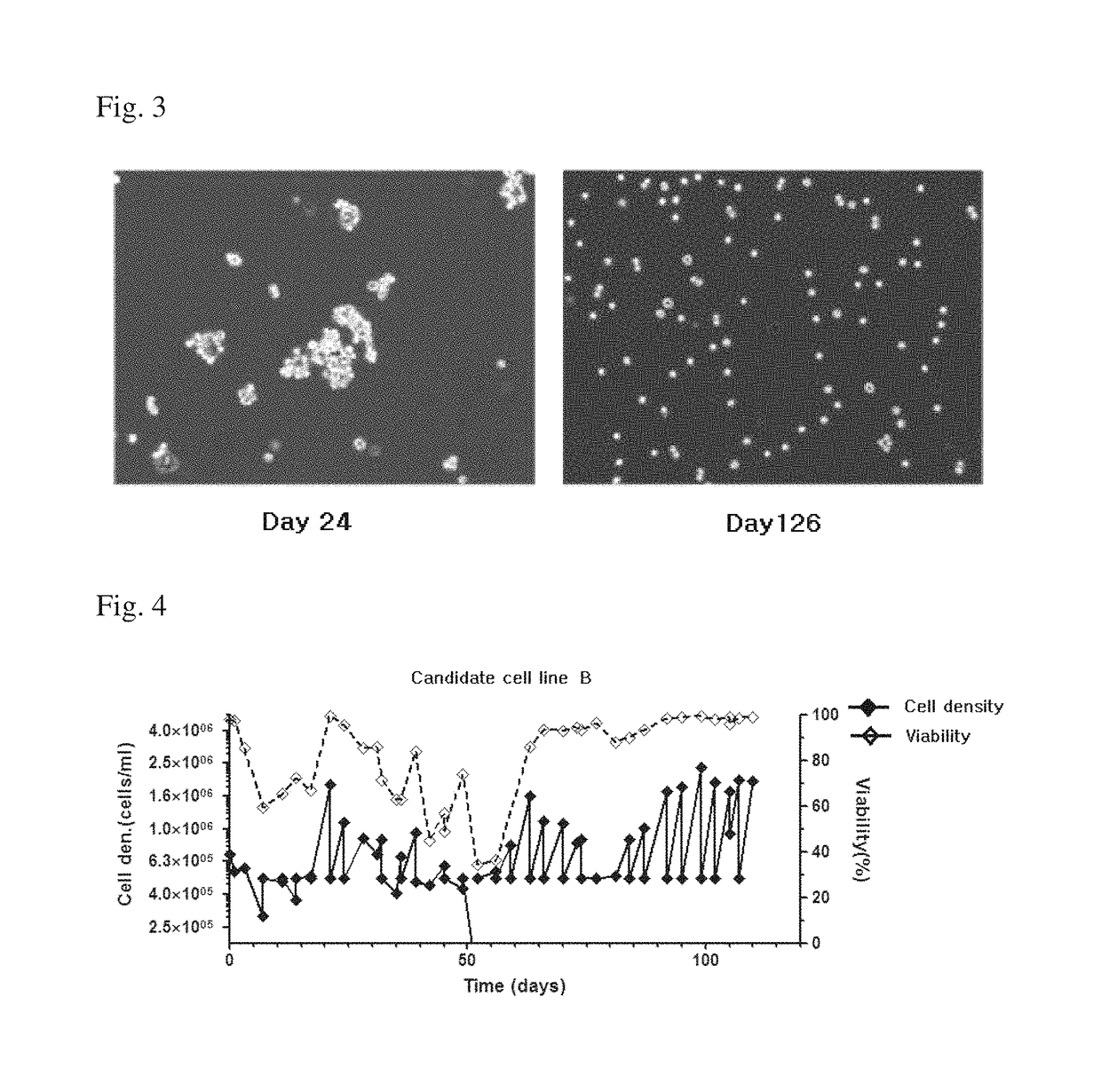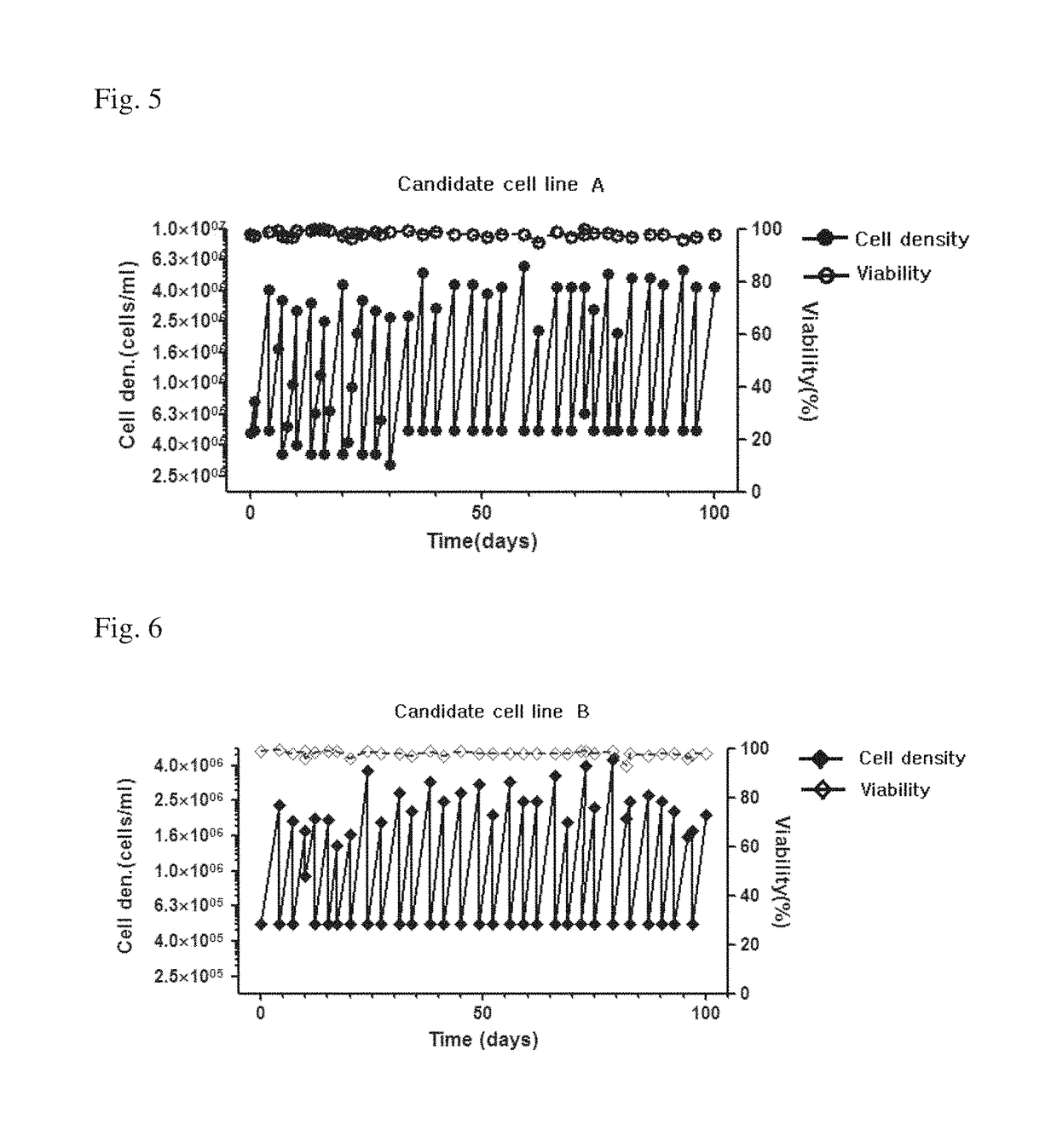MDCK-derived cell strain suspension-cultured in protein-free medium and method for proliferating virus using cell strain
a cell strain and suspension culture technology, which is applied in the direction of viruses/bacteriophages, antibody medical ingredients, peptide sources, etc., can solve the problems of unsuitable vaccine for inoculation to a person allergic to egg proteins, large space for mass production, and inability to completely eliminate egg proteins, etc., to achieve low tumorgenicity, less viral antigenic variations, and high and uniform productivity
- Summary
- Abstract
- Description
- Claims
- Application Information
AI Technical Summary
Benefits of technology
Problems solved by technology
Method used
Image
Examples
example 1
Selection Process for Candidate Cell Lines
[0054]1.1. Thawing Adherent MDCK Cells
[0055]Frozen preserved adherent MDCK cells (obtained from: ATCC, CCL-34) were thawed and cultured in 15 mL of serum medium (EMEM medium supplemented with 10% FBS) (obtained from: Lonza). Cells stored in LN2 tank were put into 37° C. water bath and thawed. Resuspended cell solution was added to T75 flask containing serum medium, and then cultured in a 37° C. and 5% CO2 incubator.
[0056]1.2. Adherent Culture
[0057]After 3-4 days, the cells obtained from 1.1 were cultured with passages at the ratio of 1:4 to 1:30. The mother cell was at passage 55. The subcultures were carried out by the following procedure.
[0058]T75 flask was taken out from the incubator of 1.1, removed of the medium, and washed. Cells were detached by treating with 0.25% trypsin-EDTA, and resuspended by pipetting with serum medium to a desired ratio. Subcultures were performed every 3-4 days at the passage ratios of 1:4 to 1:30.
[0059]Adhere...
example 2
Comparative Analysis of Candidate Cell Line and Selection of the Production Cell Line
[0077]2.1. Comparison of Cell Line Stability Through Long-Term Subcultures
[0078]2.1.1. Candidate Cell Line A
[0079]To determine the cell growth of candidate cell line A at each passage, the cell line A was subcultured by way of centrifuging the cells and removing the culture medium followed by putting a new medium, to adjust the number of cells to be 5e+05 cells / mL, once every 3-4 days for 100 days. The result of subcultures of candidate cell line A is shown in FIG. 5.
[0080]As shown in FIG. 5, even in the long-term cultures with 35 passages or more (p85+35: 85 passages before the suspension-culture, and 35 passages after the suspension), the candidate cell line A showed almost equal level of cell growth at each passage.
[0081]2.1.2. Candidate Cell Line B
[0082]To determine the cell growth of candidate cell line B at each passage which completed the suspension-culture adaptation in Example 1, the cell l...
example 3
Comparison of the Genetic Stability of the Viruses
[0119]Influenza viruses proliferate according to a changed gene sequence if changes in genetic information take place during proliferation in a host; such mutated portion can be a major surface antigen such as HA or NA antigen. As a result, the antibodies induced by the changed surface antigen may not exhibit vaccine effects as expected.
[0120]Therefore, the viruses passaged in the candidate cell line A and MDCKS-MG cell line were examined for any changes in the amino acid sequences of major surface antigens HA and NA; and the effect on the antibody formation was examined for any changes.
[0121]Specifically, taking refererence to the basic gene sequence (“Ref.”) registered at NCBI, the gene sequences of influenza viruses produced in the cell line A and MDCKS-MG cell line were compared with the influenza viruses produced in the fertilized egg.
[0122]First, the virus derived from the fertilized egg was obtained from the NIBSC; and the ami...
PUM
| Property | Measurement | Unit |
|---|---|---|
| molecular weight | aaaaa | aaaaa |
| concentration | aaaaa | aaaaa |
| mass production | aaaaa | aaaaa |
Abstract
Description
Claims
Application Information
 Login to View More
Login to View More - R&D
- Intellectual Property
- Life Sciences
- Materials
- Tech Scout
- Unparalleled Data Quality
- Higher Quality Content
- 60% Fewer Hallucinations
Browse by: Latest US Patents, China's latest patents, Technical Efficacy Thesaurus, Application Domain, Technology Topic, Popular Technical Reports.
© 2025 PatSnap. All rights reserved.Legal|Privacy policy|Modern Slavery Act Transparency Statement|Sitemap|About US| Contact US: help@patsnap.com



